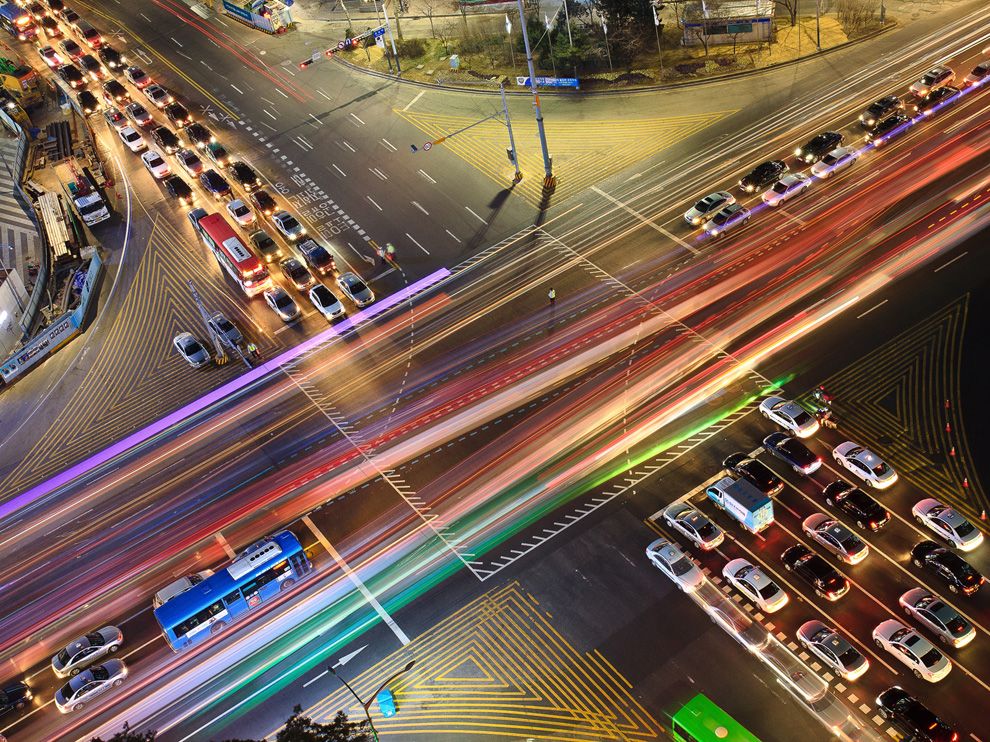
Work Zone Flagger Signals, Crossing Guards & Police: Directing Traffic
Updated Oct. 22, 2020Motorists may sometimes encounter authorized personnel directing traffic in place of road signs, signals and pavement markings. This could be because the usual traffic control devices in that area have failed; if for instance, there has been a power failure or damage to a road sign. It may also be due to another one-off situation which means obeying the usual signs and signals would endanger road users, for instance, if there has been an accident or the roadway is flooded.
People who are authorized to direct traffic under such circumstances include:
- Police officers
- Construction workers
- Crossing guards
Traffic control personnel can usually be identified by their high-visibility clothing and the equipment they carry, such as flags, paddles or whistles. They may direct traffic using these devices or hand signals. Motorists must watch carefully and wait for instructions.
Always obey traffic control persons
Drivers must always obey the instructions given by authorized persons directing traffic, over any other signs, signals and traffic control devices. Traffic control personnel are only posted at a location if their presence is essential for public safety. This is the only situation in which disobeying road signs, traffic lights and pavement markings is permitted.
Police officers directing traffic
Police officers are often assigned to direct traffic if there is a hazardous situation on the road. Usually, they are equipped with high-visibility clothing and other tools to assist their work. Though this may not be the case if a situation has developed suddenly and a nearby police officer has stepped in to control traffic.
Traffic breaks
If a situation demands that a police officer must partially or completely block traffic, they may indicate this by weaving their patrol car slowly, back and forth across the roadway. This is known as a traffic break. A traffic break may be used to hold up traffic while a hazard, wreckage or stalled vehicle is cleared from the road.
Motorists must drive slowly and remain at a safe distance from the police car if they spot a traffic break up ahead. Be sure to look for other officers managing the scene and follow any instructions they give.
Construction workers directing traffic
As you approach any work zone in the roadway, keep a lookout for construction workers or flaggers directing traffic. Traffic control personnel will not be present at every construction or maintenance area but only when their presence is necessary to stop, slow or direction streams of traffic around the work zone. Flaggers may be equipped with:
- Orange or yellow-green high-visibility vests or jackets
- Red flags
- Paddles marked with instructions such as “SLOW” or “STOP”
- Automated flagger assistance devices (see below)
Flagger signals
When flaggers are conducting traffic around a work zone, motorists must drive slowly, watch carefully and follow all instructions they are issued. Keep in mind that there may be more than one flagger present; often, they are positioned at both ends of the worksite.
- 1

Red flag.
A red flag extended horizontally across traffic means that drivers must come to a full stop. Only proceed when directed by the flagger. Be aware that you may shortly be asked to stop again. - 2

Signal paddle.
When a signal paddle is displayed, drivers must obey the message printed on the paddle, i.e. STOP, or SLOW. - 3

Electronic boards.
Automated flagger assistance devices are sometimes installed to support flaggers. Drivers must obey the messages displayed on the electronic board, just as they would the instructions printed on signal paddles.
Crossing guards
Crossing guards are often positioned around schools in the morning and afternoon, to assist school children and parents wishing to cross the street. Crossing guards may be adults or older school children, who may or may not be equipped with reflective clothing and a portable STOP sign.
Motorists must proceed with caution around school crossings and stop completely if a crossing guard is on any part of the roadway. Guiding children across the street is a dangerous job when it involves stopping traffic; these traffic control personnel are frequently injured or killed by irresponsible drivers.
If a crossing guard stops you, do not proceed until they – and the people they are helping to cross – have safely returned to the sidewalk.
Traffic control personnel safety
Any person standing in the roadway to direct traffic exposes themselves to significant risk for the benefit of pedestrians and motorists. You must always scan the road ahead, looking out for:
- Reflective clothing
- Persons stood in the roadway
- Crosswalks where crossing guards may be posted
- Flags, paddles and electronic message boards
Drivers have a responsibility to drive slowly and proceed with caution whenever police officers, flaggers, construction workers or crossing guards are occupying the road.




